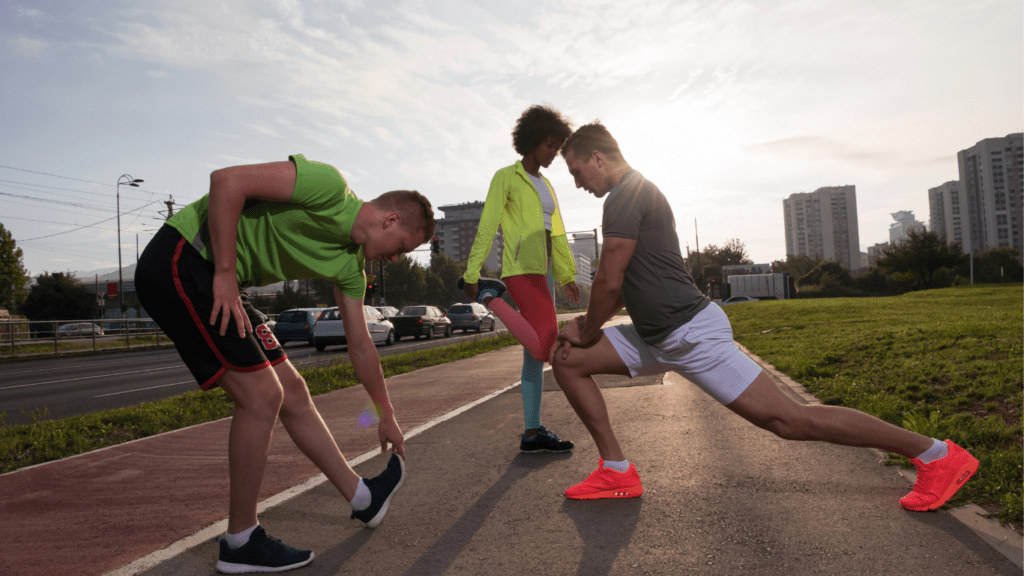As an athlete, I know how frustrating it can be when an injury sidelines your progress. Whether you’re training for a big game or just trying to stay fit, injuries can throw everything off balance. But the good news? Many injuries are preventable with the right approach to training and recovery.
Staying safe while pushing your limits doesn’t mean holding back—it’s about training smarter, not harder. From proper warm-ups to understanding your body’s limits, small changes can make a huge difference. Let’s explore practical steps to help you stay in the game and avoid setbacks.
Understanding Common Sports Injuries
Sports injuries occur frequently among athletes, impacting their ability to train and perform. Recognizing the types, causes, and potential long-term effects helps build better strategies for prevention.
Types Of Sports Injuries
- Athletes often suffer from specific injury types depending on the activity.
- Sprains (injury to ligaments) and strains (injury to muscles or tendons) are common across many sports.
- Fractures and dislocations often result from high-impact activities like football or basketball.
- Overuse injuries, such as tendinitis or stress fractures, tend to occur in endurance sports like running or swimming.
- Concussions, frequently seen in contact sports like soccer or hockey, pose significant health risks if untreated.
Causes Of Injuries In Athletes
Injuries happen for various reasons, but contributing factors often stem from improper practices. Poor technique strains muscles and joints unnecessarily. Overtraining or skipping adequate rest breaks the recovery process, leading to overuse injuries. Inadequate warm-ups or cool-downs fail to prepare or restore muscles effectively. Using the wrong equipment, such as ill-fitting shoes, increases risk during activity.
Long-term Impacts Of Injuries
Unaddressed injuries can lead to chronic issues affecting both performance and quality of life. Recurrent injuries weaken ligaments and muscles, leading to reduced strength or flexibility. Joint or cartilage damage often progresses into conditions like arthritis. Brain injuries, such as repeated concussions, are linked to long-term cognitive effects, including memory loss and attention deficits.
Principles Of Injury Prevention
Preventing injuries begins with understanding foundational principles that enhance safety and performance during training. By incorporating these strategies, I can minimize risks and maintain long-term athletic success.
The Role Of Proper Warm-up And Cool-down

Dynamic warm-ups, such as leg swings and arm circles, prepare my body by increasing blood flow and joint mobility. These exercises reduce stiffness, lowering the likelihood of strains and sprains during intense activity. After training, static stretches, like hamstring and quad holds, help cool down and promote recovery by easing muscle tension and enhancing flexibility.
Neglecting either a warm-up or cool-down limits my body’s ability to adapt to exercise demands.
Importance Of Flexibility And Mobility Training
Regular flexibility practices, including yoga or guided stretching routines, improve my range of motion, reducing joint stress during high-impact activities. Mobility drills, such as hip openers and thoracic rotations, boost movement efficiency and help me maintain proper form, decreasing the risk of technique-related injuries.
Integrating these components into my routine ensures my body’s mechanics remain optimal under strain.
Building Strength And Endurance
Strength training, like resistance exercises and weightlifting, fortifies muscles, tendons, and ligaments, making my body resilient to sudden forces. Progressive overload during workouts promotes gradual gains, preventing overuse and fatigue injuries.
Endurance-building activities, including interval running or cycling, improve cardiovascular health and enhance recovery rates. Greater stamina allows me to maintain performance levels without compromising technique, significantly lowering injury risks.
The Role Of Nutrition And Hydration
Nutrition and hydration directly impact an athlete’s performance, recovery, and injury prevention. By fueling the body appropriately, athletes can support tissue repair, reduce inflammation, and maintain optimal function.
Foods That Boost Recovery And Prevent Injuries
Incorporating specific nutrient-rich foods into meals accelerates recovery and supports injury prevention. Protein sources like lean meat, fish, eggs, and plant-based options such as lentils and tofu aid muscle repair and growth. Omega-3-rich foods, including:
- salmon
- walnuts
- chia seeds
help reduce inflammation. Calcium and vitamin D from dairy, fortified plant-based milk, or leafy greens strengthen bones and lower the risk of fractures. Antioxidant-packed fruits and vegetables, like berries, spinach, and sweet potatoes, combat oxidative stress caused by intense physical activity. Whole grains, such as quinoa and brown rice, provide sustained energy for recovery periods.
Staying Hydrated During Training And Competition
Proper hydration regulates body temperature, prevents cramps, and maintains muscle function. During training or competition, I ensure I drink water frequently to replenish fluids lost through sweat. For sessions lasting over 60 minutes, I incorporate electrolyte-rich drinks to restore sodium, potassium, and magnesium levels. Timing matters—drinking 16–20 ounces of water 2–3 hours before physical activity optimizes hydration. Monitoring urine color helps assess hydration status; pale yellow indicates adequate levels, while dark yellow signals dehydration. By staying consistently hydrated, I minimize the risk of fatigue, dizziness, and performance decline.



 Lead Training Analyst
Lead Training Analyst
